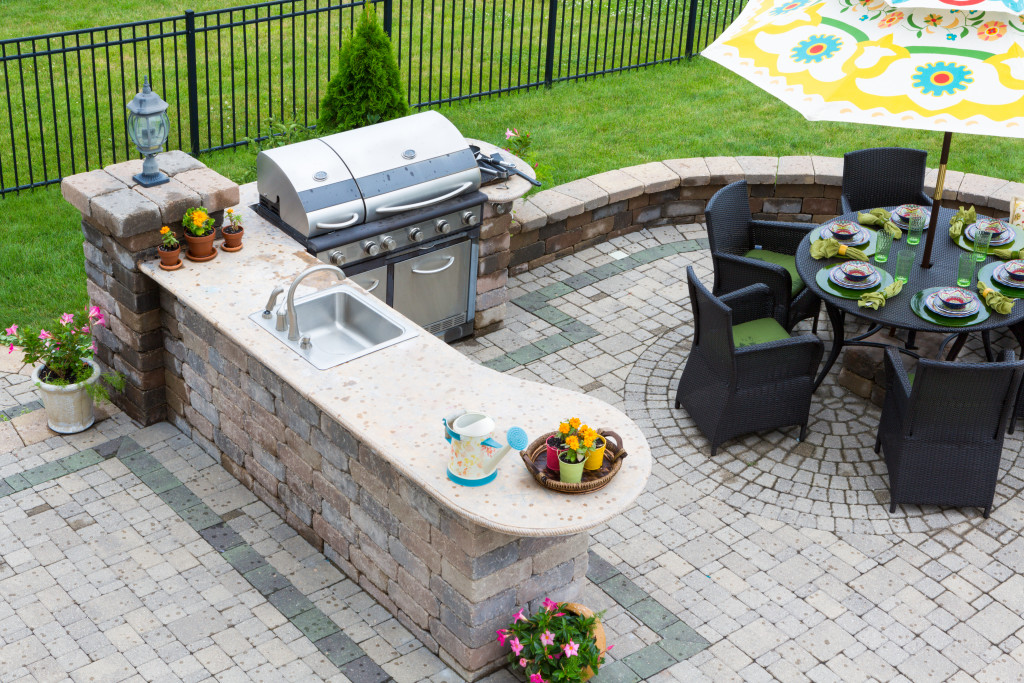Assume you come home from work on a hot summer day, take an ice-cold beverage, and relax outdoors on your lovely back patio, or you have a pool party or barbeque in your backyard.
These are a few examples of outdoor activities you can do at home. Outdoor living is defined as establishing a place in your yard or property just for enjoying the outdoors. The wonderful thing about outdoor living is that you can completely tailor it to your lifestyle and preferences. Do you like soaking up the rays of the summer sun? You may construct a pool in your backyard. You may build an outdoor kitchen if you enjoy cooking and barbecuing. Do you like hosting parties? Make a lovely back patio with enough seats with matching outdoor cushion covers for all of your guests and family.
Many individuals are opting to personalize their homes and outside areas for additional pleasure, increasing the popularity of outdoor living. Even if you live in a four-season region, you can design outdoor areas appropriate for your climate and make the most of the outside space you have. Below are several advantages of outdoor living areas.
The Benefits of Outdoor Living Areas
Fresh, outdoor air is rich in phytoncides, which are airborne compounds generated by plants to defend themselves from being eaten by insects. According to the Department of Environmental Conservation, breathing in these phytoncides leads your body to produce more NK white blood cells, which destroy virally contaminated and tumor-infected cells in your body.
Get Some Vitamin D

It may be challenging to find time to soak in the sun between work, commuting, and (hopefully) getting the necessary seven to nine hours of sleep. Unfortunately, this means that many working Americans are deprived of a free supply of vitamin D. Fortunately, as little as 15 minutes of sunlight each day may boost your vitamin D levels and make you feel better during those long hours spent inside. Aside from the anti-inflammatory effects of vitamin D, going outdoors is a beautiful opportunity to practice “earthing” or “grounding.” According to the science behind earthing, connecting with the earth gives the body negative electrons and neutralizes the harmful free radicals associated with chronic inflammation.
In addition, spending more time outside as a kid has been related to reducing myopia development or nearsightedness. Reduced screen time and disconnecting out have been proven to decrease adults’ eye strain, tension, and headaches associated with “computer vision syndrome.”
Forest Bathing
Science has shown that you should take a moment to smell the roses. Shinrin-yoku, or “forest bathing,” is a Japanese technique in which you take time to connect with nature via all of your senses. A 2019 research of individuals of working age with and without depressive inclinations discovered that forest bathing has a substantial beneficial impact on mental health, particularly for those with depressive tendencies. If you need another incentive to go outside, a University of Anglia research discovered that increasing your time spent outdoors lowers your risk of Type 2 diabetes, cardiovascular disease, high blood pressure, and early mortality. Furthermore, older people who spend time outside recover quicker and receive more exercise.
Increase Your Home’s Value
When it comes to selling a house, one of the essential characteristics that buyers look for is room. Unfortunately, homeowners who cannot generate extra interior space may find it difficult to compete with other houses on the market. On the other hand, adding an outdoor area is a low-cost method to expand the living space of a home.
When looking for their ideal house, buyers expect to be impressed. Imagine their surprise when they discover a lovely outdoor kitchen or sitting space. This one feature may be enough to set your house apart from the competition.
The conventional patio or deck is a thing of the past. Areas containing just a grill, a patio table, and a few lawn chairs have developed into sophisticated living areas that match their interior equivalents. Homeowners are now gravitating toward more practical rooms. Indoor/outdoor kitchens, dining rooms, and lounge spaces are just a few examples of how people incorporate indoor/outdoor living into their homes. Outdoor living spaces may be designed to fit in with the rest of the house. By keeping the design concept constant across the two areas, they seem to be one unified environment. Outdoor living spaces also provide a smooth transition between the two. Using sliding glass barriers, for example, enables you to divide the two rooms with little visible and physical limits. The doors provide an uninterrupted view of the outer world. And, since they are simple to use, they provide access to both places when required.



